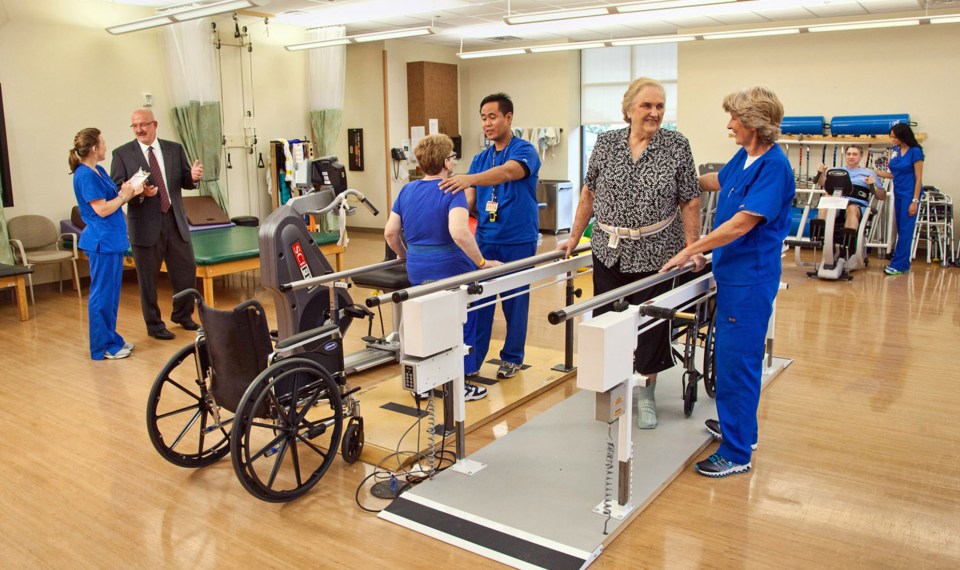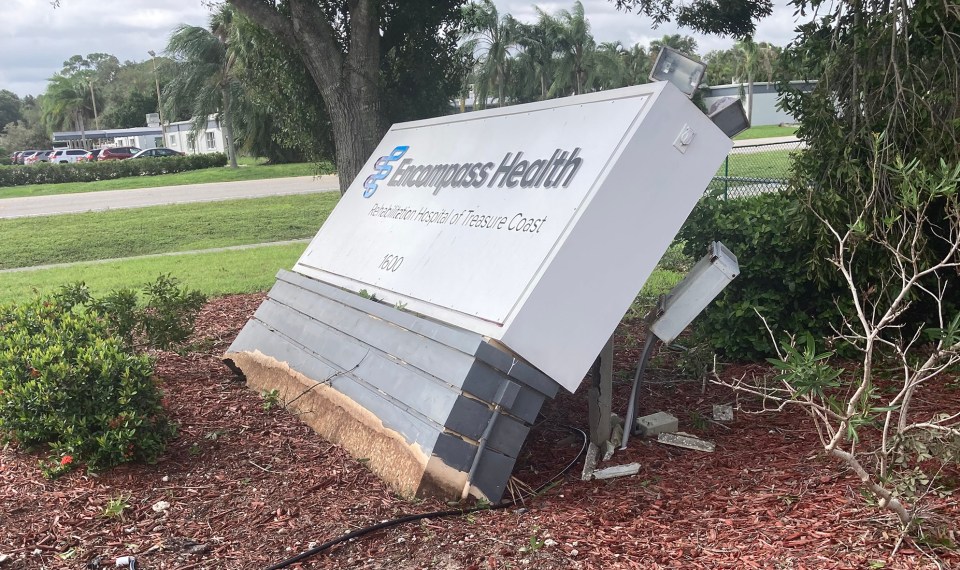The risk of having a stroke has increased by 50% over the last 17 years—an alarming statistic. It is now estimated that 1 in 4 people will have a stroke in their lifetime.
In its 2016 guidelines, the American Heart Association and American Stroke Association “strongly recommend” that patients with stroke be treated at an inpatient rehabilitation facility rather than a skilled nursing facility. An inpatient rehabilitation provides a multidisciplinary approach to care from physical therapists, occupational therapists, and speech-language pathologists.
As movement specialists, physical therapists and physical therapy assistants need to know what interventions are most effective at restoring function in these patients to get them back to what they love.
High Intensity Gait Training Helps Patients Reach Their Goals
When we ask our patients recovering from stroke what their goals for therapy are, the response we get the majority of the time is they want to walk again.
Because gait is so important to restoring function and improving patients’ quality of life, therapists need to use evidence-based interventions to progress patients towards those goals. There is increasing evidence that high-intensity gait training (HIGT) improves gait speed, distance, quality, and symmetry.
HIGT is walking practice delivered with high repetition that is vigorous enough to keep the heart rate elevated over a target level. The intensity should range from 70%-85% of your patients’ maximum heart rate.
HIGT is not just reserved for those who can already walk. Many therapists may not be aware that even low functioning patients can make big improvements. Scoring at least a 6/56 on the Berg Balance Scale within the first week of admission to inpatient rehabilitation predicted walking with supervision or better at discharge.
A focus on HIGT in therapy can help you be efficient with the limited amount of time you have with your patient. When HIGT is the focus of all therapy sessions, patients show improvement in both ambulation and non-practice tasks, such as sit to stands and transfers (Straube, 2014). An added benefit of HIGT is that it improves their cardiovascular fitness and endurance, which can decrease their risk of having another stroke.
High Intensity Gait Training and Neuroplasticity
After a stroke, the brain has undergone cell death, which is what causes the functional decline we see in a patient’s mobility. Neuroplasticity is a process that involves the brain adapting and creating new pathways to compensate for the areas lost from the stroke. The principles of neuroplasticity include:
- Use it or lose it
- Use it and improve it
- Specificity
- Repetition matters
- Intensity matters
- Time matters
- Salience matters
- Age matters
- Transference
- Interference
HIGT taps into the principles of neuroplasticity by focusing on specificity, intensity, repetition, and salience, the last because recovering the ability to walk is so important to those recovering from stroke.
To facilitate neuroplasticity using the principle of specificity, the intervention must be specific to the task and should mimic the activity as closely as possible. In other words, to affect the neural pathways that control walking, the patient has to be walking.
According to “Clinical Practice Guideline on Improving Locomotor Function Following a Chronic Stroke, Incomplete Spinal Cord Injury or Traumatic Brain Injury,” (Hornby, 2020), patients who work on walking tasks at 70%-85% of their maximum heart rate show better results when compared with conventional therapy. If the rate of perceived exertion (RPE) scale is used instead of heart rate to monitor intensity, it is recommended that patients maintain an RPE greater than or equal to 14/20 or 7/10.
Additionally, the more repetitions of the task the patient performs at these higher intensities, the better the outcomes. Conventional therapy produces about 250 steps per session, on average, with the target heart rate achieved less than 5% of the time (Scrivener, 2012). In contrast, HIGT produces about 1,500 steps a day on average in an inpatient rehabilitation unit and achieves higher intensities 40% of the time.
An added benefit to increasing the number of steps during formal therapy time is that it can result in more steps the patient performs on their own, outside of therapy. In one study, patients in the less intense walking program did approximately 850 steps during therapy and then approximately 50 outside of therapy. In contrast, in the more intense walking program, patients walked approximately 3,900 steps during therapy and then did 1,000 outside of therapy.
What does HIGT look like?
To keep the heart rate in the target zone throughout the session, walking may be performed on a treadmill or on the ground. The challenge can be increased in different ways, such as:
- Wearing ankle weights or a weighted vest
- Increasing gait speed
- Ascending and descending stairs
- Changing directions
- Resisted walking
- Minimizing use of upper extremity support while maximizing weight bearing through the lower extremities
- Adding obstacles
However, just because you are incorporating these challenges does not mean your patients are exercising at the proper intensity. It is essential that you first know their heart rate max: HRmax=208-0.7 x age. Then, you need to determine their target heart rate range, which is 70%-85% of their HRmax (target heart rate is 10 bpm lower if the patient is on a beta blocker).
When the heart rate starts to drop below the target, it is time to get the patient up and moving again. When the heart rate is elevated higher than the target zone, it is OK to rest, but make sure they are resting and not waiting.
It is important to note that it is not essential to optimize kinematics; your aim is to have patients complete as many steps as possible. In fact, making sure your patients are moving in a more normal pattern may be preventing them from achieving the intensity that is required, thus interfering with their progress. Instead, interventions that maximize the amount and intensity of stepping practice in challenging environments, with limited attention toward gait kinematics, show significant gains in locomotor function.
What Stands in Your Way?
Despite all of the evidence in support of using HIGT to progress patients towards their functional goals and improve their quality of life, many still aren’t using it.
We might agree with the research and try to walk our patients more, but are we monitoring their heart rate and/or RPE? Do we know what heart range we are targeting? Are we monitoring how much of our treatments are spent with the patient sitting? Do we still spend time on strengthening exercises and balance activities?
As clinicians, we often get so comfortable with what we know that it is hard to accept when there may be a better option. We look at our treatments and past patients and think to ourselves, “Why change? My patients still show progress.” However, just because past interventions showed progress, that doesn’t mean we should keep using them. We should aspire to treat our patients using interventions that are supported by the best available evidence.
REFERENCES
Ardestani M. (2019). Compensation or recovery? Altered kinetics and neuromuscular synergies following high-intensity stepping training poststroke. Neurorehabilitation and Neural Repair. 47-58.
Feigin, V. (2022). World Stroke Organization (WSO): Global Stroke Fact Sheet 2022. International Journal of Stroke : Official Journal of the International Stroke Society. 18–29.
Henderson, C. (2022). Predicting discharge walking function with high-intensity stepping training during inpatient rehabilitation in nonambulatory patients poststroke. Archives of Physical Medicine and Rehabilitation. S189-S196.
Hornby T. (2015). Feasibility of focused stepping practice during inpatient rehabilitation poststroke and potential contributions to mobility outcomes. Neurorehabilitation and Neural Repair. 923-932.
Hornby, T. (2011). Importance of specificity, amount, and intensity of locomotor training to improve ambulatory function in patients poststroke.” Topics in Stroke Rehabilitation. 293-307.
Moore, J. (2020). Implementation of high-intensity stepping training during inpatient stroke rehabilitation improves functional outcomes. Stroke. 563-570.
Scrivener, K. (2012). Exercise dose and mobility outcome in a comprehensive stroke unit: description and prediction from a prospective cohort study. Journal of Rehabilitation Medicine. 824-9.
Straube, D. (2014). Effects of dynamic stepping training on nonlocomotor tasks in individuals poststroke. Physical Therapy. 921-33.
_____________________________________________________________
NOTE: The opinions in this article are the author’s own and do not necessarily reflect the views of Encompass Health
The content of this site is for informational purposes only and should not be taken as professional medical advice. Always seek the advice of your physician or other qualified healthcare provider with any questions you may have regarding any medical conditions or treatments.



